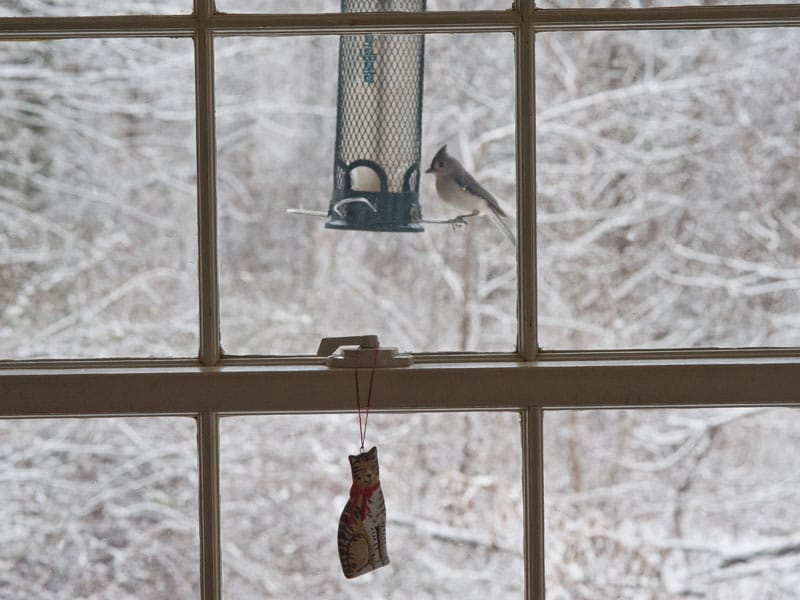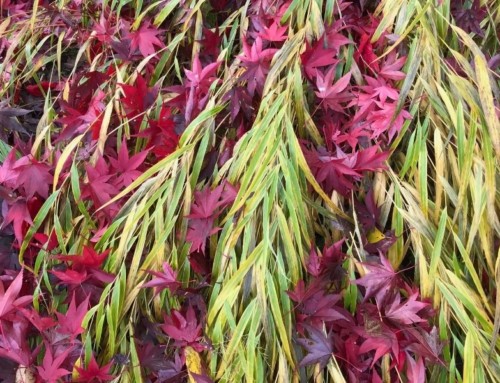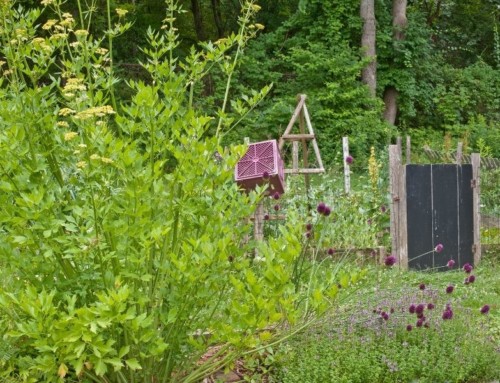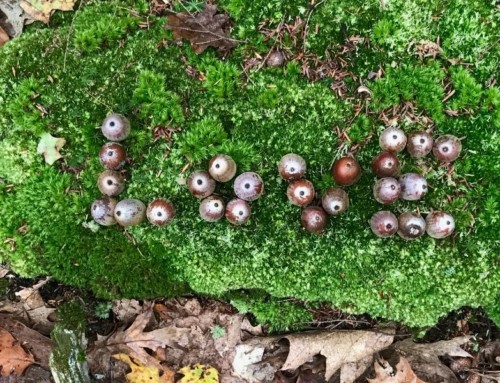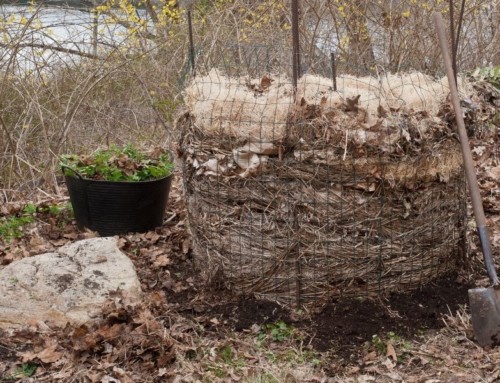Lots of bird action outside as winter moves toward spring. I hear rusty scolding Carolina wrens and occasional unidentified loud chirps. Male gold finches sport a few new yellow feathers in their drab winter plumage – they’re turning back to summer gold right before my eyes.
Bluebirds hang upside down from the eaves of my garden shed like blue-clad clowns, catching drops of snowmelt mid-drip. Nuthatches run up and down the shagbark hickory tree out back, in search of overwintering insects. Brutal temperatures remind me to keep filling the birdfeeder outside a front porch window.
The frustration (and cost) of dealing with seed-guzzling squirrels, raccoons, bears, and predation by marauding neighborhood cats turned me sour on bird feeders for a time. And I confess a lazy disinclination to scrub gunked-up feeders for disease control. Mea culpa.
Besides, I always thought … that birdfeeders were really for people, that birds could find their own food …
HOW TO HELP BIRDS
Doug Tallamy, entomologist, wildlife ecologist and author of Bringing Nature Home set me straight. “They used to,” Dr. Tallamy told me in a phone interview, “but those days are over. We have modified habitats so much in suburbs and urban environments that there’s not enough food. The sterile manicured suburban setting – with 46.5 million acres of lawn – is not conducive to bird survival unless we put out feeders. We need more native plants – in whole neighborhoods.”
Tallamy suggests that “It’s best not to put bird feeders in the deadly zone near the house. When a sharp-shinned or Cooper’s hawk dives, birds all dive for cover. A dark window looks like cover, so we’re killing birds all winter long. Either put them really close to the house, like 1 foot away, or else 20 yards or more away.” Plant twiggy or thorny shrubs nearby for safe cover.
Hannah Waters, in the Winter 2018 Audubon Magazine suggests setting up feeders within 3 feet of glass or 30-plus feet, because “hungry birds can’t distinguish glass from reflected habitat.” Screens or decals can deter collisions, or, she writes, “let the grime build up; dirty glass is a life-saving eyesore.” My kind of solution.
The perfect place for bird safety and my enjoyment turned out to be 18” from the window, sheltered by the roof above my front steps. Hung high enough to not bonk anybody on the head, I can reach the feeder by opening the window – a real plus on cold snowy mornings. Squirrels finally figured out that chowing down on spilled seed is easier than climbing up the side of the house and being thwarted.
A bear ripped the clapboard siding off one of my coaching client’s garage to get to birdseed stored inside. Learning from her experience, I fill feeders only when bears hibernate, and keep planting plants for nesting, cover and winter sustenance.
CATS AND BIRDS
Cats have secret lives. Miss Leaf, my sweet feline companion morphs from mellow pet luxuriating under the wood stove to hissing hellcat in a heartbeat when I try to clip her toenails. I rarely arrive at the top of my driveway without seeing a watchful little head framed in the pane of the front window – a position only accessible from my dining table, where she is not allowed.
When I unlock the door, Miss Innocence strolls out of the kitchen to greet me, as though she had been there all along. And how is it that I find muddy footprints on the counter and seedlings with their little heads bitten off in the greenhouse window by the kitchen sink every morning? I never catch her in the act.
The guy who blends my birdseed calls the feeder outside a window “kitty tv.” Pull up a chair and the bird show outside will keep a cat entertained, less likely to get bored and do naughty things. Miss Leaf’s furiously lashing tail speaks eloquently of the supreme effort it takes to refrain from lunging at those cheeky chickadees. But claw marks gouged into the woodwork on every window in the house tell the tale of a cat’s true nature. Cats are predators.
Growing up, when we let the dog out, the cat went too. I always thought … they naturally needed to roam free. No way was I going to live with a stinky cat box when I adopted Dusty and Zenobia (named after a silver-leafed native shrub by my Elegant Silvers co-author who sent the siblings home with me). I soon found out why cats live longer, healthier lives if they stay indoors; the predator part took longer to sink in.
A feral tomcat somebody “released” at the farm up the road tore up every cat in the neighborhood. Ticks lurking in grass and leaf litter right at kitty face-height burrowed bloody circles around the cats’ eyes no matter what preventative I tried. The day the Carolina wren fledglings left their nest in my back-porch bird bottle was an eye opener. I didn’t notice the helpless birds scattered on the lawn when I let the cats out. Cats are fast. Every bird was dead in less than a minute. I have a gardening friend whose sleepy housecat can snatch a hummingbird right out of the air.
Cars and carnivores did them both in. Sadder but wiser when Miss Leaf arrived, I prepped for a long indoor life. A cat door through the door to the basement let me put the litter box out of sight but not out of mind. When I go downstairs to do a load of wash I scoop out the litter box. Tossing used kitty litter into woodchuck holes out back usually encourages sudden relocation. A bobcat has been prowling lately. There are plenty of voles in the garden if it can’t catch a woodchuck.
It’s a cat eat bird world out there, and a fox/coyote/hawk/owl eat cat world. I’m happy to live with claw marks on windows and Miss Leaf on my lap. Birds need all the help we can offer. Now I can get back to planting bird habitat that isn’t a death trap.
The Cornell Ornithology Lab and Audubon post much research on bird predation by cats. Read Richard Conniff’s compelling editorial in the New York Times.
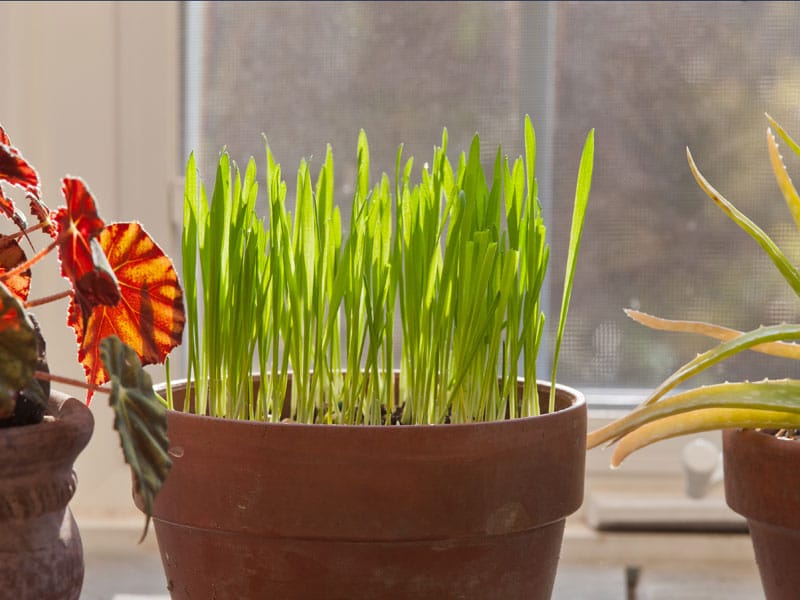
Cat grass in my greenhouse window
